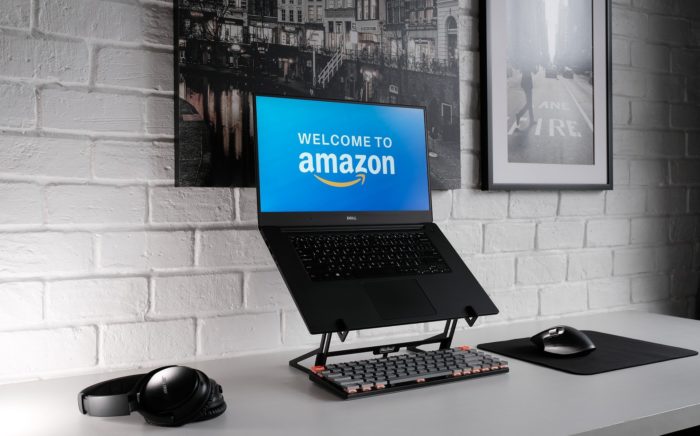Table of Contents
We agree with you that it is exciting to become an Amazon seller. However, there is no doubt that oftentimes new sellers are confused about the different fees associated with their accounts.
It’s understandable to be lost when first starting your Amazon selling journey as it’s quite difficult to keep track of all the different fees you’ll have to pay.
Quick Summary of This Guide
In this post, we’ll discuss Amazon seller repay charges as well as other fees you’ll have to pay as a seller on Amazon.
Some fees occur with every sale while other fees are billed monthly or annually.
Let’s see what they are and how they work.
Amazon Seller Account Fees

Whether you’ve been on the platform for a while or if you’re just starting out, it’s important to be aware of all the fees you’ll have to pay while selling on Amazon.
If you’ve already sold items on other online retail platforms, then you’ll have some idea of the fees that you’ll incur.
However, it’s important to do some research when you get into selling on Amazon as it’s an entirely different ball game.
Amazon is a great platform for building brand awareness, increasing profit margins, and widening your reach.
However, all of this doesn’t occur without you paying fees for it.
This is where Amazon seller repays or “seller repayment” fees come in.
Amazon seller repay charges are constantly ongoing and they depend on a number of different factors such as:
- Your seller account type (individual or professional)
- Your transactions
- The balance in your account
- Ongoing business costs
As well as other factors.
So, what exactly are seller repayment fees?
Amazon Seller Repay Charges
The idea behind Amazon seller repay charges or seller repayment fees is to cover and make up for any charges that you may not have paid for in the past.
This can happen when you have a fee that is due but you don’t have enough funds in your Amazon seller account.
Thus, this charge will later show up on your credit card statement as a “seller repayment” fee.
In order to understand what your Amazon seller repay charges are going to be like, you need to be aware of all the fees you will incur as a seller on the platform.
Example: If you have an Amazon seller account, even if you’re not actively selling any products on the platform yet, you’ll still have to pay a $39.99 monthly fee for your account.
Let’s assume that you withdrew funds from your Amazon account earlier and currently have $10 in it.
In this case, the $10 will be charged from your account and you’ll have incurred seller repay charges of $29.99.
This is a fairly simple example but in reality, there are a ton of other fees which you need to be aware of. We’ll talk about these fees later in the post.
Our point here is that you need to constantly take note of the fees you will incur so that you are able to take care of them accordingly.
Otherwise, they will be charged from your credit card as seller repayment fees. If you’re not careful, you could accumulate a ton of credit card debt while you’re selling on Amazon.
Amazon Seller Fees You Should be Aware of
We’ve been going on like a broken record about how you should take note of all fees you need to pay as an Amazon seller.
So, what exactly are these fees?
Well, they differ drastically based on what type of seller account you have.
Amazon always collects seller repayment fees every month so if you’re not careful, they can definitely add up.
Depending on the scale of your online business, you’ll either have an individual seller account or a professional seller account.
The fees for both of these types of accounts are different. Let’s discuss them:
Individual Seller Account
If you’re an individual seller, then the only fees you have to worry about are the $0.99 selling fee per item along with any referral or variable closing fees.
You don’t even have to pay the monthly subscription fee of $39.99 if you have an individual seller account.
Thus, it’s the best type of account to have, according to Amazon, if you sell less than 40 products every month.
Professional Seller Account
The professional seller account is for sellers who have a bigger business on Amazon compared to individual sellers.
When it comes to the professional account, you do have to pay the $39.99 subscriber fee each month.
That being said, you won’t have to pay the $0.99 selling fee with every sale you make.
This is ideal if you’re a bigger seller that is selling more than 40 products per month. That’s because if you were doing this with an individual seller account, then the $0.99 selling fee would really add up as your sales increased.
It’s important to note, however, that you still are subject to paying the referral and variable closing fees even if you have a professional account.
You should know that you can change back to an individual seller account any time you want from a professional seller account.
You can do this if you feel that the running costs for a professional account are too high currently or if the number of products you’re selling per month goes down.
Closing Fees
You will be subject to closing fees if you are selling items that belong to certain categories on Amazon.
The closing fee on Amazon is usually $1.80 per item.
The categories where the closing fee is enforced are:
- Books
- DVDs
- Music
- Software
- Video games
- Video game consoles
- Video game accessories
The closing fee is charged to the seller when the ordered item by the customer is shipped.
Important note: This closing fee we are talking about here is referred to as the “variable closing fee” in Amazon documentation. Whether or not you are charged this depends on what category the product belongs to.
This fee is not to be confused with the “fixed closing fee” which we have referred to throughout this post as the “selling fee”.
If you see the “closed fixing fee” being referred to anywhere in Amazon documentation, remember that they are referring to the $0.99 selling fee that is charged to individual sellers on each item sale.
Referral Fees
Amazon charges a referral fee on all items you sell regardless of whether you’re an individual seller or a professional seller.
The specific amount of the referral fee will depend on the category of the product you’re selling.
Typically, the majority of products incur about a 15% referral fee unless you’re in categories such as:
- Video game consoles
- Cell phones
- PCs
- Electronics
- 3D-printed items
Here’s a snippet of some Amazon referral fees according to different product categories:
You can click here to find the complete referral fee structure for all categories of products on Amazon.
You’ll notice in the picture that there are certain items such as Amazon device accessories and Amazon Explore which have much higher referral fee percentages compared to other products.
Depending on the type of product, you may have to pay a higher minimum referral fee even though the corresponding percentage for the category may mean it’s lower.
For example, if you buy something for $10 and its referral fee percentage is 10%, that would mean that you’d have to pay $1 as a referral fee.
However, if the minimum referral fee for that type of product is $5, then you’ll have to pay $5 regardless.
High-Volume Listing Fee
If you have a seller central account that sells an extremely high number of items, then you may be subject to Amazon’s high-volume listing fee.
This fee is applicable to you if the item is:
- a non-media item
- Was created at least 12 months ago
- Has not had a sale in the past 12 months
- Has had an active offer on it in the past
As of now, Amazon does not charge this fee for the first 1.5 million items you sell on the platform.
After that, you are charged a fee of $0.001 per item.
So, for example, if you sell 1.6 million SKUs in November 2021, then you will be charged a high-volume listing fee of $100 in the month of November 2021.
The 100,000 SKUs above the limit of 1.5 million will account for the $100 fee as (100,000 * 0.001 = $100).
Refund Administration Fees
This fee will be charged to your seller central account any time you refund a customer for a payment you have already received from Amazon.
In this case, Amazon will refund you the referral fee that you paid for the product(s), minus the applicable refund administration fee.
Refund administration fees are either $5 or 20% of the applicable referral fee; Whichever of the two has the lower amount.
For example, say you refunded a customer an item that costs $10 and had a 10% referral fee.
In this case, you would pay a refund administration fee of $0.20 (because $10 * 10% = $1 and 20% of $1 is $0.20).
Wrapping Things Up…
So, that’s all you need to know about Amazon seller repay charges.
We hope we were able to clear out how Amazon seller fees work, how you can calculate them, and which ones you need to be particularly aware of.
What do you think of Amazon seller fees? Let us know in the comments below.




